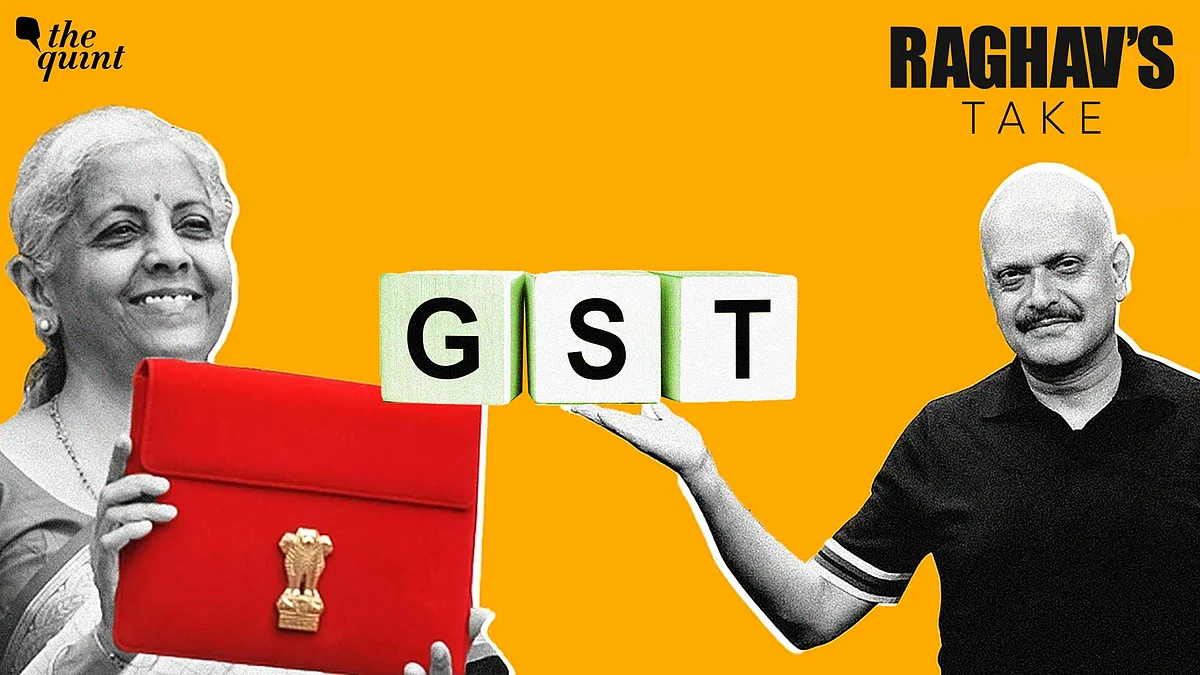GST Reform Is a Long Overdue Fix That Could Ease India’s Tax Burden
The GST system was crying out for repair, writes Raghav Bahl.

advertisement
In his Independence Day speech on 15 August, Prime Minister Narendra Modi declared that the Centre will reduce the number of GST slabs. The 5 percent and 18 percent rates will be retained, but the 12 percent and 28 percent slabs will be scrapped.
Just six months back, when Finance Minister Nirmala Sitharaman had announced sweeping income tax cuts that gifted an extra one lakh crore rupees to urban Indian households, several people, including me, had wondered why the government had not reduced GST rates instead.
Here are relevant extracts from the piece I had written at the time:
What if instead of tax cuts, the government had promised a sharp reduction in GST rates, thereby increasing the consumption capacity of every Indian - of ek sau chalees crore Bharatwaasis - ie of each and every one of our 1.4 billion citizens, as opposed to a piffling 40 million or 4 crore tax payers? I bet the progressive, multiplier impact of this move could have kick started a much bigger consumption upswing.
But the Prime Minister’s apologists will pounce on me saying the GST rate is not decided in the Union Budget, but by the GST Council.
Yes, Cut GST Rates
Why would a GST rate cut be far more effective? Because at a core rate of 18 percent, and a luxury rate of 28 percent, both unchanged and fixed for the last eight years, the blood of poor, middle-class - even high salary earning – Indians is being sucked by an extravagant and regressive tax.
For every Rs 10,000 they spend on household items and insurance policies, poor and middle-class families pay Rs 1800 to the state. But If Rs 300 is returned to them via a reduced tax rate, they could buy a few extra eggs for the kids. And when a high salary earner buys a car for Rs 10 lakhs - if the GST rate is cut from 28 percent to 22 percent, by six percentage points - she would save Rs 60,000. She can finally buy that iPad for her daughter.
India’s GST is Sensitive to the Laffer Curve
In tax jargon, it’s called the Laffer Effect, ie when tax rates are cut, consumption swings up, thereby stimulating growth and generating more taxes to make up for the cut in rates.
The Laffer Curve is predicated on an optimum tax rate at which revenues are maximised, although it cannot be a precise or scientific number. Governments must do this slowly and empirically; unfortunately, our policy makers have been too timid to experiment, staying paralysed for eight years.
Several studies suggest that the “revenue neutral” GST rate is between 6.2 percent and 15.3 percent, ie if we were to cut the core GST rate from 18 percent to 15 percent, and the luxury rate from 28 percent to 22 percent, the government should not lose any revenue. What’s more, lower taxes reduce the incentive to create a black economy, and lead to much greater compliance. M/s Modi & Sitharaman should have gathered the courage to take this measured risk.
But we will never know if we never try!
In any case, GST is crying out for repair.
Just read what India’s foremost tax lawyer, Arvind Datar, wrote in The Indian Express: "The fatal flaw in the functioning of the GST Council is the single-minded focus on revenue maximisation. No attempt is made to rationalise rates, cut down complicated notifications and circulars, check arbitrary and exaggerated demands through show-cause notices, and create a fair and impartial appellate system."
At Least Privatise More PSUs
But finally, if all these entreaties are falling on truly scared, risk averse political ears, I can propose an insurance plan that could eliminate the revenue risk – and the magic word is “privatisation”, so tragically abandoned by the current regime in today’s budget.
Currently, our listed public sector assets are valued at more than Rs 17 lakh crore.
It’s a shame that instead of encashing these gains and returning the value to the true owners, ie you and me, the tax paying citizens of India, the government is pushing us deeper into debt, having infused Rs 2.75 lakh crore into a struggling BSNL, and over Rs 11,000 crore into RINL, just two examples among several suicidal fiscal calls.
This must stop. India needs to break the ennui that was so evident in Finance Minister Sitharaman’s exertions on the 1st of February 2025.
India’s economy needs new ideas and bold actions.
(This piece has been updated and re-published from The Quint's archives after the Centre's decision to reduce the number of GST slabs. It was first published on 1 February, 2025.)